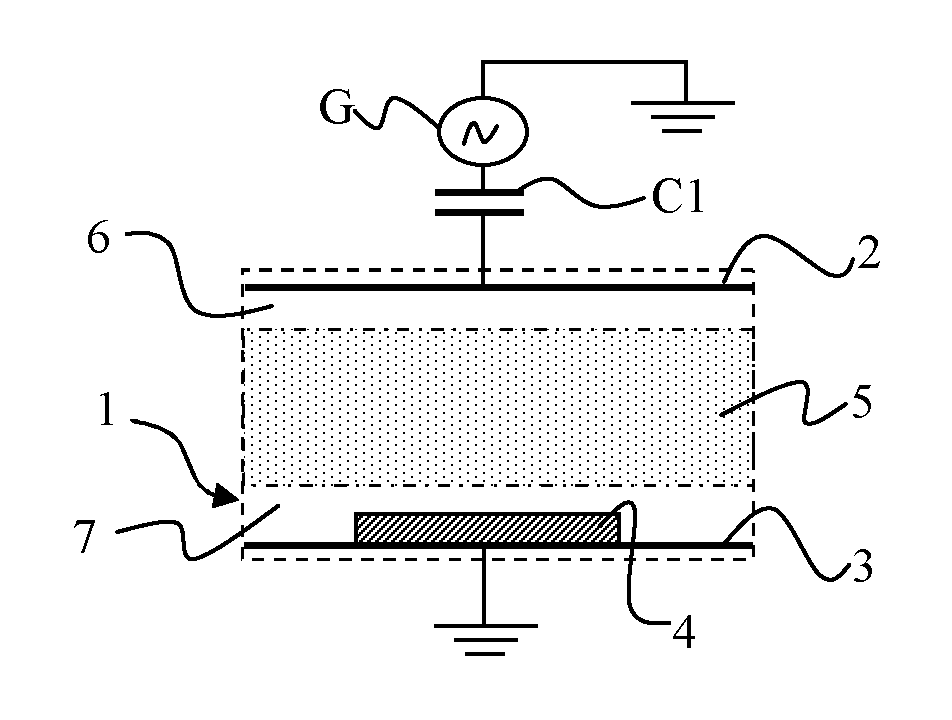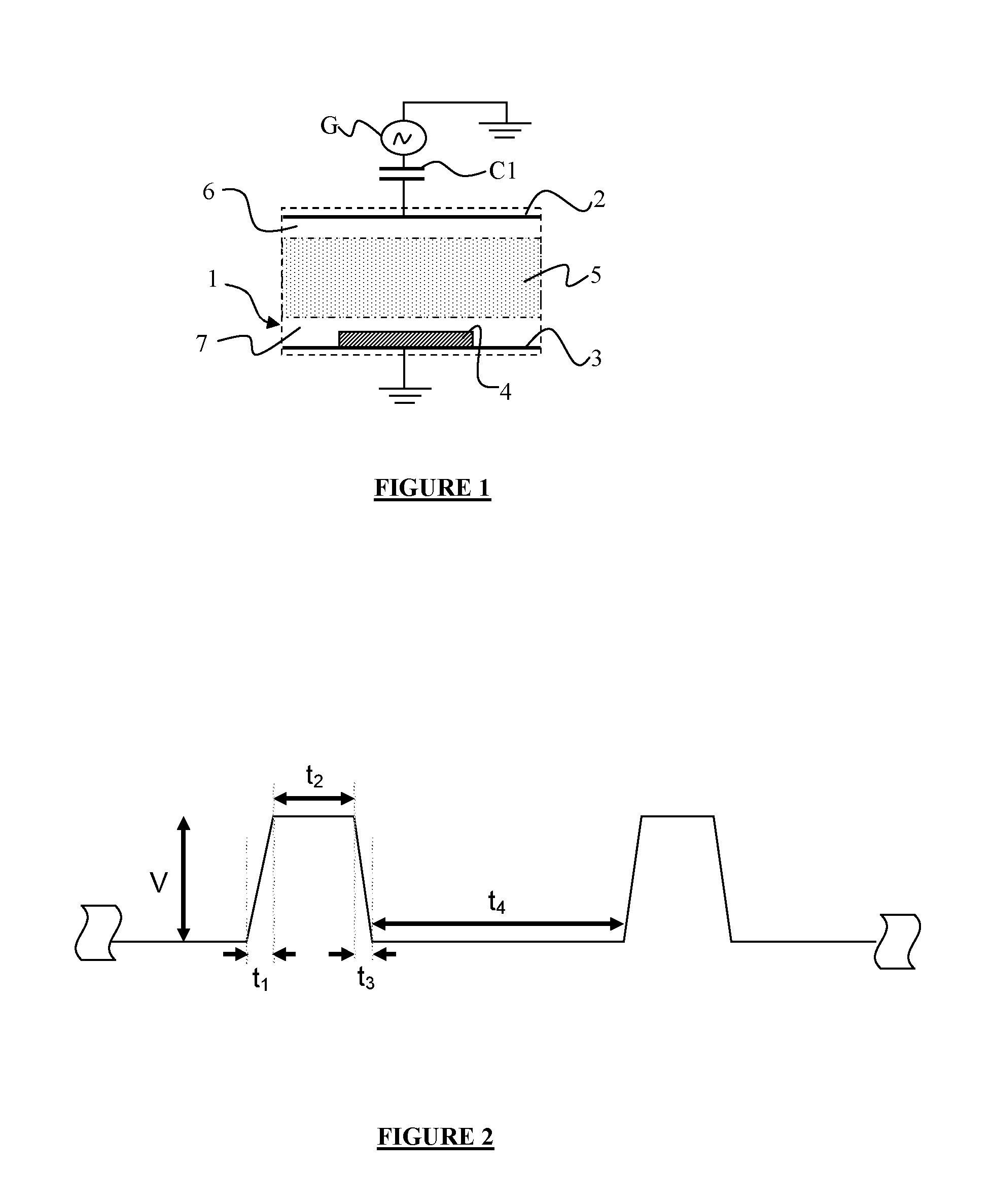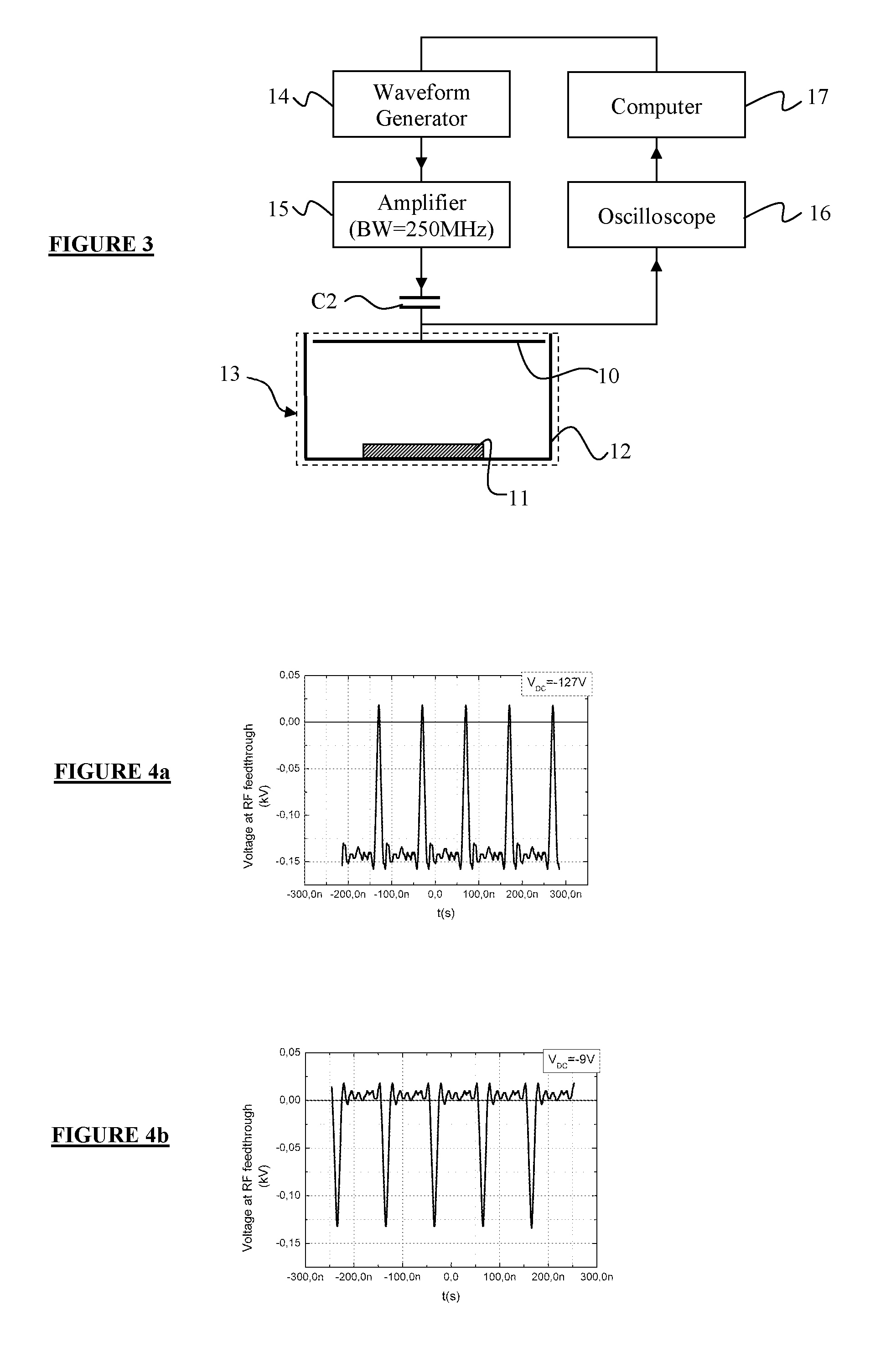Plasma processing in a capacitively-coupled reactor with trapezoidal-waveform excitation
a capacitively coupled reactor and trapezoidal waveform technology, which is applied in the direction of plasma technique, chemical vapor deposition coating, coating, etc., can solve the problems of complex shape of ion energy distribution function (iedf) in conventional sinusoidally excited reactors, inability to control, and limited processing rate, so as to enhance the supply of deposition precursors and reduce deposition
- Summary
- Abstract
- Description
- Claims
- Application Information
AI Technical Summary
Benefits of technology
Problems solved by technology
Method used
Image
Examples
Embodiment Construction
[0047]A simplified schematic of a capacitively-coupled plasma reactor, shown in FIG. 1, comprises a processing chamber 1, a powered electrode 2, and an unpowered electrode 3. Radio-frequency power from a generator G is applied through a blocking capacitor C1 to the powered electrode 2. The substrate 4 to be processed can be placed either on the powered electrode 2 or on the grounded or unpowered electrode 3. Plasma 5 is generated inside the volume of processing chamber 1 between the powered electrode 2 and the substrate 4.
[0048]In all plasma reactors so-called sheaths 6 and 7 form between the bulk plasma and all the surfaces surrounding it (the electrodes, substrates and processing chamber walls). Sheaths have a high impedance, which is principally capacitive. It is the sheath impedance that limits the current flowing through the plasma 5, and therefore determines the power absorbed by the electrons. The majority of the RF voltage applied across the electrodes is divided between the...
PUM
| Property | Measurement | Unit |
|---|---|---|
| frequency | aaaaa | aaaaa |
| voltages | aaaaa | aaaaa |
| diameter | aaaaa | aaaaa |
Abstract
Description
Claims
Application Information
 Login to View More
Login to View More - R&D
- Intellectual Property
- Life Sciences
- Materials
- Tech Scout
- Unparalleled Data Quality
- Higher Quality Content
- 60% Fewer Hallucinations
Browse by: Latest US Patents, China's latest patents, Technical Efficacy Thesaurus, Application Domain, Technology Topic, Popular Technical Reports.
© 2025 PatSnap. All rights reserved.Legal|Privacy policy|Modern Slavery Act Transparency Statement|Sitemap|About US| Contact US: help@patsnap.com



